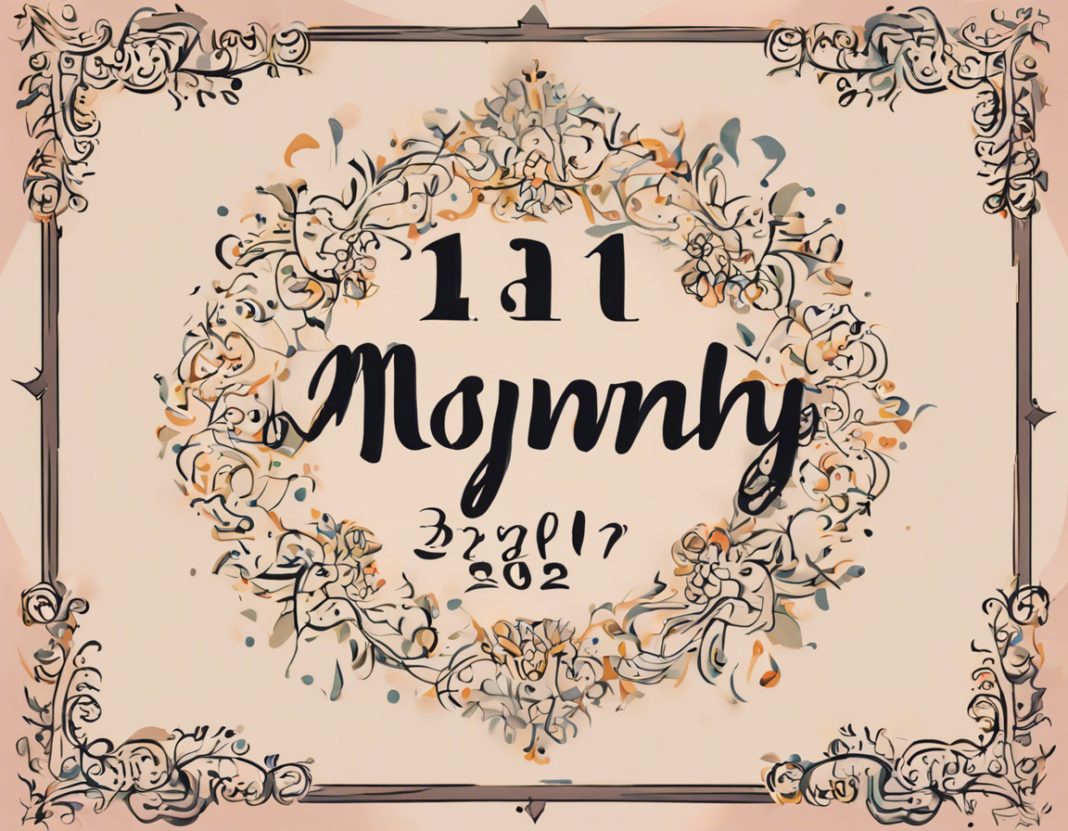Introduction
Learning the names of the months in Hindi is an essential step towards understanding the language and culture of India. Just like in English, the Hindi calendar is based on the solar year, with each month varying in lengths and linked to significant festivals and events. In this guide, we will explore the names of the Hindi months along with their corresponding Gregorian calendar months.
The Months in Hindi
The Hindi calendar consists of twelve months, each with its unique significance. Let’s discover the names of the months in Hindi along with their English counterparts:
- चैत्र (Chaitra) – March to April
- वैशाख (Vaishakh) – April to May
- ज्येष्ठ (Jyeshtha) – May to June
- आषाढ़ (Ashad) – June to July
- श्रावण (Shravan) – July to August
- भाद्रपद (Bhadrapad) – August to September
- आश्विन (Ashwin) – September to October
- कार्तिक (Kartik) – October to November
- मार्गशीर्ष (Margashirsha) – November to December
- पौष (Pausa) – December to January
- माघ (Magh) – January to February
- फाल्गुन (Phalguna) – February to March
Significance of Hindi Months
Each Hindi month holds cultural, religious, and historical significance in the Indian context. For instance, the month of श्रावण (Shravan) is dedicated to Lord Shiva, and many devotees observe fasting during this period. Similarly, the month of कार्तिक (Kartik) is considered highly auspicious for performing religious rituals and ceremonies.
Tips for Memorizing Hindi Months
If you are looking to memorize the names of the months in Hindi effectively, here are some tips to help you along the way:
- Create flashcards with the Hindi names on one side and English translations on the other.
- Practice writing the names of the months in Hindi to improve your recall.
- Associate each Hindi month with a festival or event to better remember its significance.
- Use mnemonic devices or rhymes to link the names together for easier retention.
Common Phrases and Expressions with Hindi Months
Knowing the names of the Hindi months can also help you understand common phrases and expressions used in the language. Here are a few examples:
- चैत्र का महीना (Chaitra ka mahina) – The month of Chaitra
- वैशाख में बैसाखी (Vaishakh mein Baisakhi) – Baisakhi in the month of Vaishakh
- ज्येष्ठ का महीना (Jyeshtha ka mahina) – The month of Jyeshtha
FAQs about Learning Hindi Months
-
Q: Why is it important to learn the names of the Hindi months?
A: Understanding the Hindi calendar is essential for communication, cultural awareness, and celebrating festivals in India. -
Q: Are the Hindi months based on the lunar calendar?
A: No, the Hindi calendar follows the solar year, similar to the Gregorian calendar. -
Q: How can I practice using the names of the Hindi months in sentences?
A: Try incorporating the Hindi months into daily conversations, writing, or while discussing festivals and events. -
Q: Are there regional variations in the names of the Hindi months?
A: While the basic names of the months remain consistent, regional dialects may influence pronunciation and usage. -
Q: Can I use Hindi months in formal writing and official documents?
A: Yes, the names of the Hindi months are widely used in formal communication and official documentation in India.
Conclusion
Learning the names of the Hindi months is not just a linguistic exercise but a gateway to understanding the rich cultural tapestry of India. By familiarizing yourself with the Hindi calendar and its significance, you can deepen your connection to the traditions and customs of this diverse nation. So, take the first step today and start exploring the vibrant world of Hindi months!


